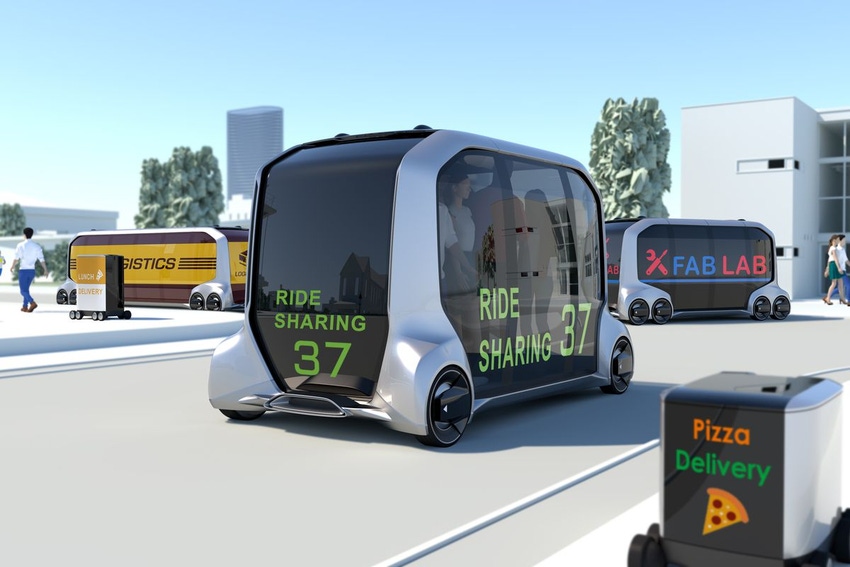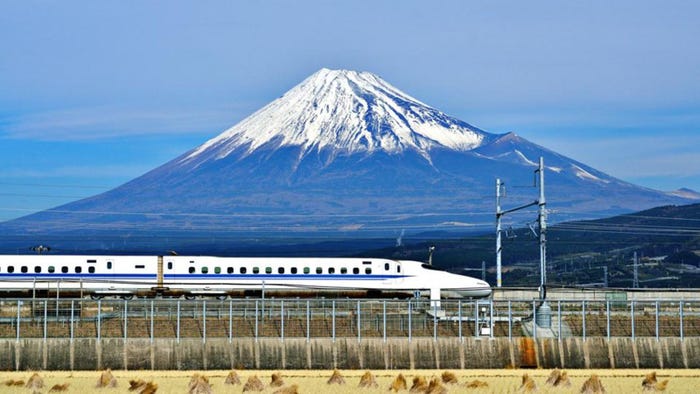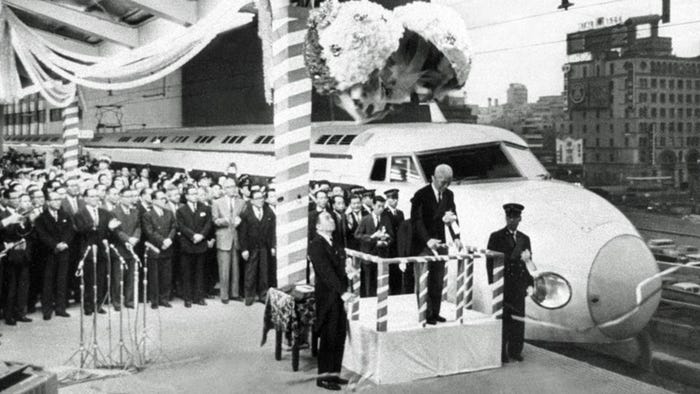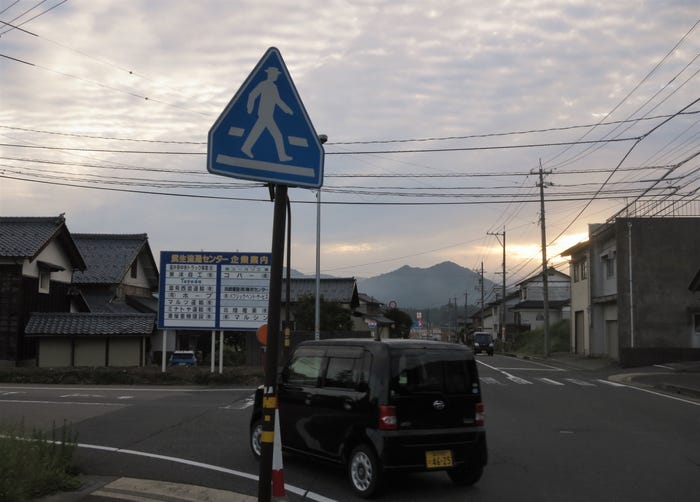Beyond Self-Driving: Is Japan The Future Of Transport?
July 24, 2018

By Ciarán Daly
Key takeaways
As Japan races towards becoming the first country with nationwide autonomous vehicles, automakers are already grappling with the massive implications of this revolutionary new AI-powered technology
With an aging population and rapidly growing urban centres, big questions remain as to how AVs can benefit communities outside of the big cities
Radical solutions are being proposed which could see the birth of an entirely new approach to mobility: vehicles-as-a-service

TOKYO - In a bold leap forward for autonomous vehicles, Japanese Prime Minister Shinzo Abe announced last month that a network of self-driving cars will be on Tokyo’s roads in time for the opening of the 2020 Olympics. The government plans to start testing autonomous cars on public roads this year, with the goal of commercialising the system nationwide by 2022.
It won’t be the first time Japan has used the Olympics to radically boost its infrastructure. Nine days before the opening of the 1964 Tokyo Olympics, Emperor Showa presided over the first Shinkansen's maiden voyage. Hitting then-breakneck speeds of 130mph, the blue-and-white bullet train sprinted from Tokyo to Osaka in record time, cutting journeys down from 6 hours 40 to 4 hours.
As the train sped on its way, it heralded Japan’s astronomical rise to the status of global economic powerhouse. Fifty years later, the Tokyo-Osaka Shinkansen line is the most intensely used railway in the whole world, Shinkansen networks stretch across the entire Japanese archipelago, and the resultant Tokaido megalopolis today dominates the country.
[caption id="attachment_11993" align="alignright" width="448"] Emperor Showa cuts the ribbon on Japan's first bullet train (Getty Images)[/caption]
Emperor Showa cuts the ribbon on Japan's first bullet train (Getty Images)[/caption]
Just as the bullet train solved problems facing the Japanese economy back in the 1960s, it also generated new—even existential—challenges for the old Japan. As a largely mountainous country, Japan is home to thousands of small, often poorly-connected rural communities with aging populations. Young workers continue to leave these communities for the still-booming metropolises, leaving behind largely elderly communities that struggle to get by. The Ministry of Internal Affairs estimates that today, over half the population in 15,000 of Japan’s 65,000 settlements is over the age of 65.
The aging population is central to national debates about the birth rate, the urban / rural divide, skills and training, the economy, and Japan’s future as a whole. It is these settlements which, having witnessed a dramatic downturn in fortunes since the last Summer Olympics, could be the greatest beneficiaries of the new, AI-powered transit system promised for 2020—or, face terminal decline.
An urbanist affliction?
The road ahead for autonomous vehicles remains clear in Japan, owing to a tape-cutting regulatory approach which remains the envy of competitor nations.
From Silicon Valley to the streets of Tokyo, there’s an urbanist skew to much of the technology that has revolutionised the world in the last decade. 'Floating transport' apps like Uber, Lyft, or Citymapper only really have a presence in major cities, and extending their reach is something that enterprises are yet to fully grapple with.
With many of the training programmes for automotive AI taking place in small urban centres or, even worse, closed circuit tracks, an even bigger question remains about whether autonomous vehicles will actually be safe on unpredictable rural roads. For automated vehicles to reach their full potential, they need to hit the tarmac and drive under real conditions—otherwise, they simply won’t have the necessary input data to account for real-world driving scenarios.
[caption id="attachment_11995" align="alignleft" width="400"] Small communities such as Ajimano rely heavily upon Kei cars (pictured) - Source: G Witteveen[/caption]
Small communities such as Ajimano rely heavily upon Kei cars (pictured) - Source: G Witteveen[/caption]
Thankfully, the road ahead for autonomous vehicles remains clear in Japan, owing to a tape-cutting regulatory approach which remains the envy of competitor nations. With AV experimentation widespread, the governments of Tokyo and Nagoya have created a fast-track ‘one-stop shop’ approval system to enable real-world testing of automated vehicles.
The question remains, however, as to what this will mean for those outside of well-connected metropolitan streets. As town halls shut down and services move away from small communities, it’s tempting to plug the gap with technological solutions, as evidenced by the growing robotic care sector in Japan. It’s to these markets that automotive companies are already looking for answers about the future of mobility.
Assisted driving in the land of the Kei car
“You don’t need a massively powerful vehicle to go and do your weekly shop. Maybe these short trips could benefit from some level of automation.”
The focus of connected car efforts today lies not in a pie in the sky, fully automated self-driving future. Instead, enterprises looking to engage in this space should focus their attention on immediate, practical use cases that are going to benefit key market segments today, argues Mandali Khalesi, Head of Automated Driving Mobility & Innovation at Toyota. That means understanding consumers first and working with existing infrastructure and demands.
In lieu of reliable public transit, rural Japanese communities rely almost exclusively on personal vehicles to get around. This is one factor fuelling the popularity of the ‘Kei car’. With an engine of 660cc or less, these small, low-powered vehicles make up about a third of the domestic vehicle market. They’re used for regular trips over short distances: the school run, grocery shopping, or a work commute.
“These are the kinds of areas that automated driving could benefit on both the luxury and lower ends of the market,” Khalesi says. “Right now, automated technologies are actually quite expensive, with everyone focused on the luxury segment. I think what we have to look at is how we can bring the price point down and address the pain points for a low-end price segment.”
The gradual introduction of semi-automated functions to an existing layer of vehicles, such as the Kei car, appears to be the next steps towards bringing the price of connected car technology down—and could be a stepping stone towards a fully automated, self-driving future.
“You don’t need a massively powerful vehicle to go and do your weekly shop. Maybe these short trips could benefit from some level of automation,” Khalesi says. “If you’re generally always going to the same mall to do your grocery shopping, 2-3 times a week, you’ll have collected enough data after 20-30 trips that the vehicle can just take you through your route without having to simulate all the potential weather or traffic scenarios.”
Toyota Research Institute (TRI), an R&D wing of Toyota specializing in the future of mobility, is working on precisely this. The Institute aims to extend automotive AI far beyond self-driving to reach across the whole spectrum of mobility, from assisted driving to enhanced user experiences.
One project, the ‘Guardian’ vehicle, is human-driven but introduces safety functions to prevent drivers from making mistakes. If you start falling asleep at the wheel, for example, the car will engage the self-driving functions to take over. Or, if you use the pedals improperly, Guardian technology is able to intervene to prevent a collision.
The long-term goal, explains TRI CEO Dr. Gill Pratt, is to ‘eventually build a car that can never be responsible for a crash, regardless of what the driver does’. This kind of technology could prove critical to elderly drivers in rural communities, who might otherwise completely lose their independence once they’re forced to retire from the roads. This way, they likely won’t need to wait decades for Level 5 autonomous vehicles.
From mobility-as-a-service to vehicle-as-a-platform
“Should we be thinking less about transporting people, and more about bringing services to them?”
Perhaps, though, questions of mobility only really become critical in the absence of convenience. Businesses and governments are looking towards autonomous vehicle technology partially in the hope that it can plug regional gaps in investment and services provision. After all, if local bus routes stayed open and services remained operational, smart vehicles would not be as critical to the survival of small communities.
From Guardian technology to Tesla’s Autopilot mode, it’s widely assumed that autonomous driving will largely serve the function of delivering people or goods to a destination without human intervention. The conversation around the problems facing rural Japan, however, have taken autonomous driving concepts far beyond transit.
Groups such as the Toyota Mobility Foundation are flipping the idea of smart transit on its head: from ‘mobility-as-a-service’, to ‘vehicle-as-a-platform’. At CES 2018, Toyota announced the e-pallette concept; a multi-purpose, modular, automated vehicle which is capable of transforming into a roaming health clinic, a general store, a hotdesking space—or just a bus. Parallel discussions are ongoing regarding the automation of the last mile of supply chain and logistics, which will ensure remote deliveries are still feasible—and scalable—as ecommerce continues to boom.
Khalesi argues that, in situations where it might not make sense economically to keep local services in operation, intelligent technology can be introduced to support the crucial social functions they provide. “Should we be thinking less about transporting people, and more about bringing services to them?” he asks. “If you can use a vehicle as a platform to support those functions, maybe you don’t need people to travel such a long distance for their health checkup.”
While it remains to be seen whether technology alone is capable of saving Japan’s rural communities, what is clear is that the conversation around the future of mobility must go much further than convenience. As one of the world’s most forward-looking countries gears up to make automated vehicles a reality for 2020, the critical social and industrial implications of AI technology will continue to be explored—and challenged—today.
Mandali Khalesi will present Toyota's AI approach to automated driving for the first time globally at The AI Summit Hong Kong on August 1st. Find out more

Based in London, Ciarán Daly is the Editor-in-Chief of AIBusiness.com, covering the critical issues, debates, and real-world use cases surrounding artificial intelligence - for executives, technologists, and enthusiasts alike. Reach him via email here.
Feature photo courtesy of Yoshikazu Tsuno
About the Author(s)
You May Also Like


.jpg?width=700&auto=webp&quality=80&disable=upscale)
.jpg?width=700&auto=webp&quality=80&disable=upscale)
.jpg?width=700&auto=webp&quality=80&disable=upscale)


.jpg?width=300&auto=webp&quality=80&disable=upscale)

.jpg?width=300&auto=webp&quality=80&disable=upscale)